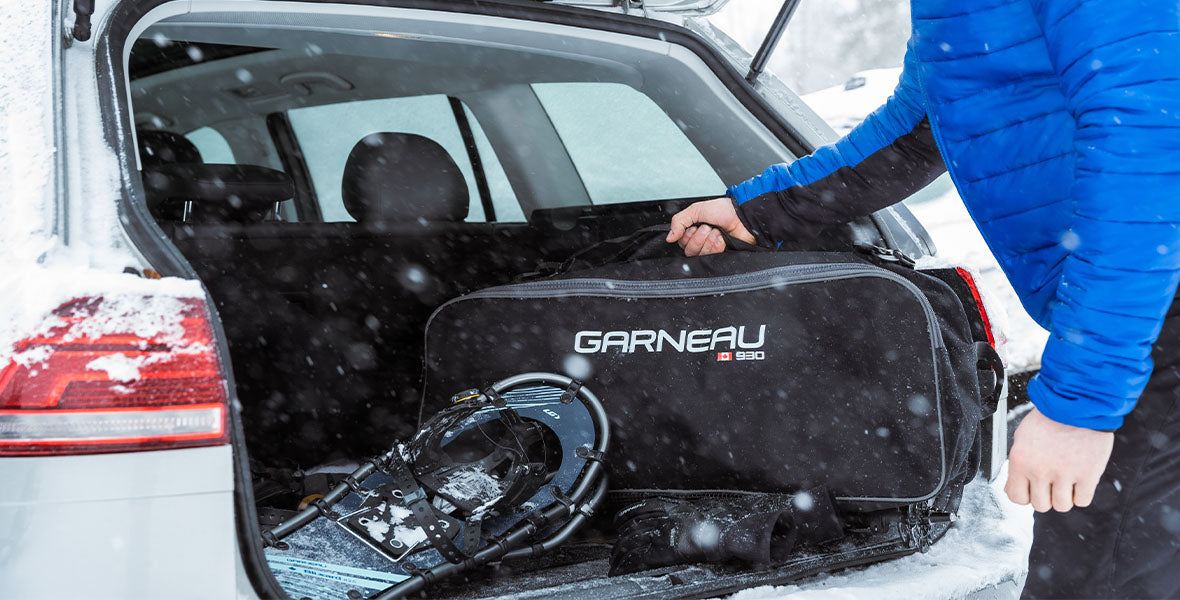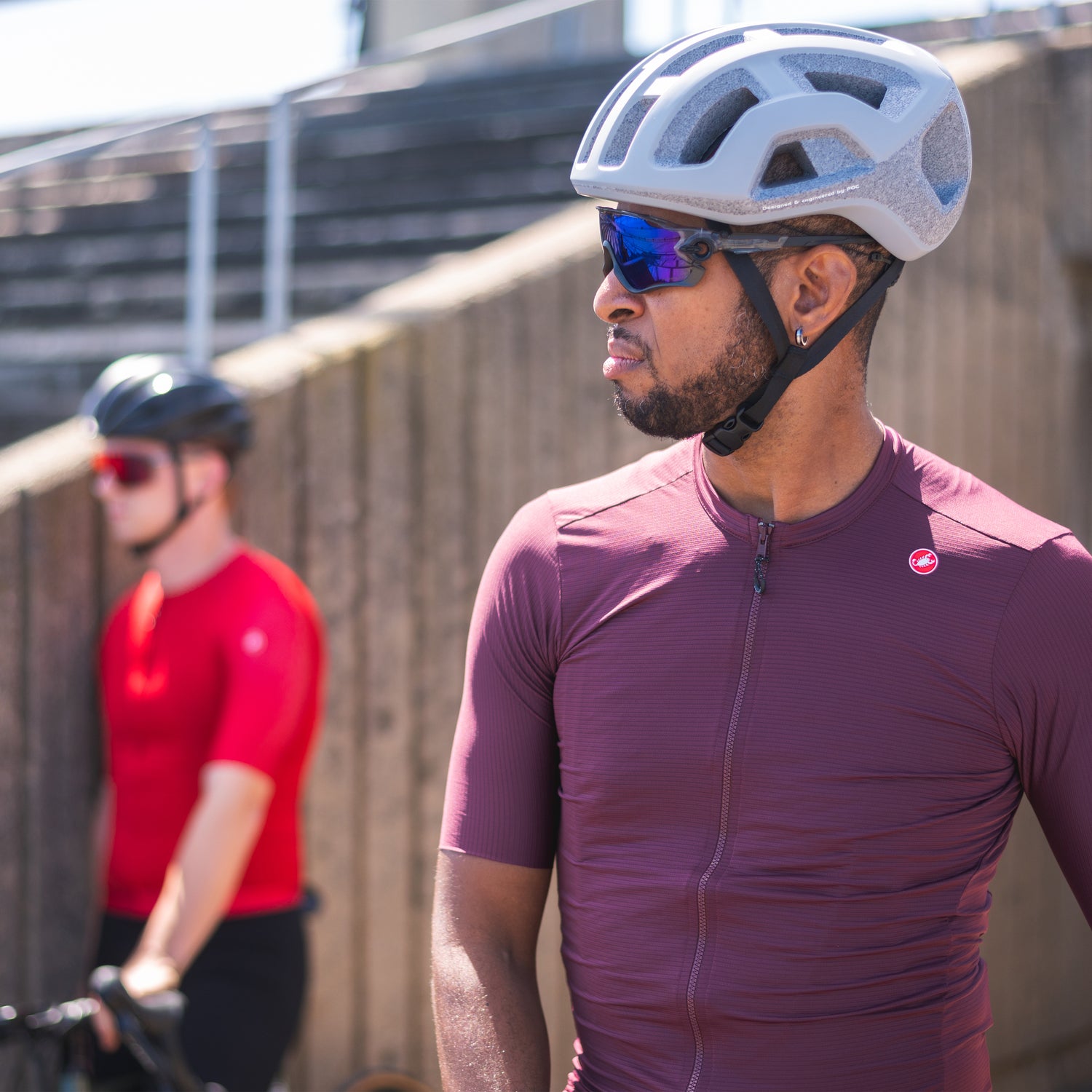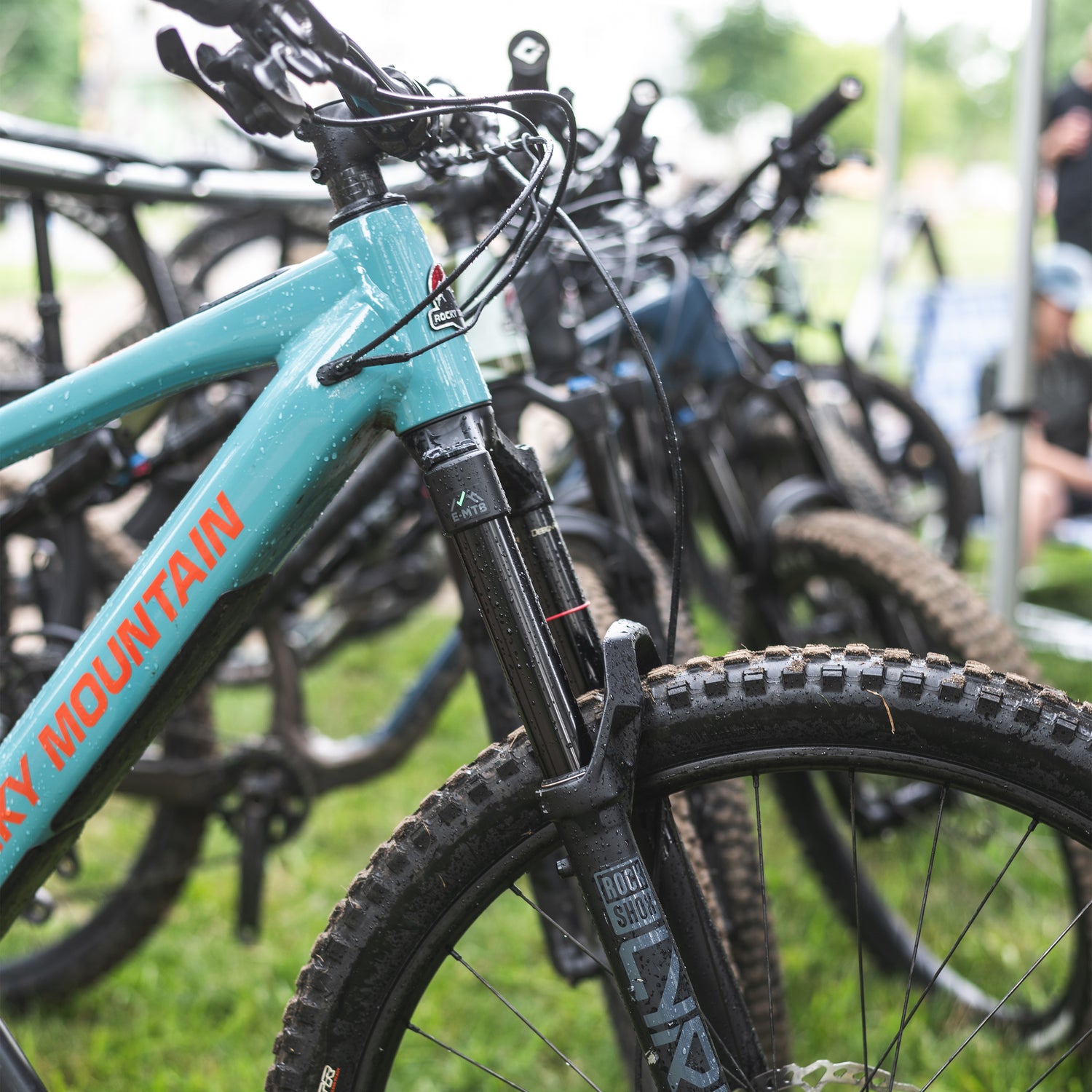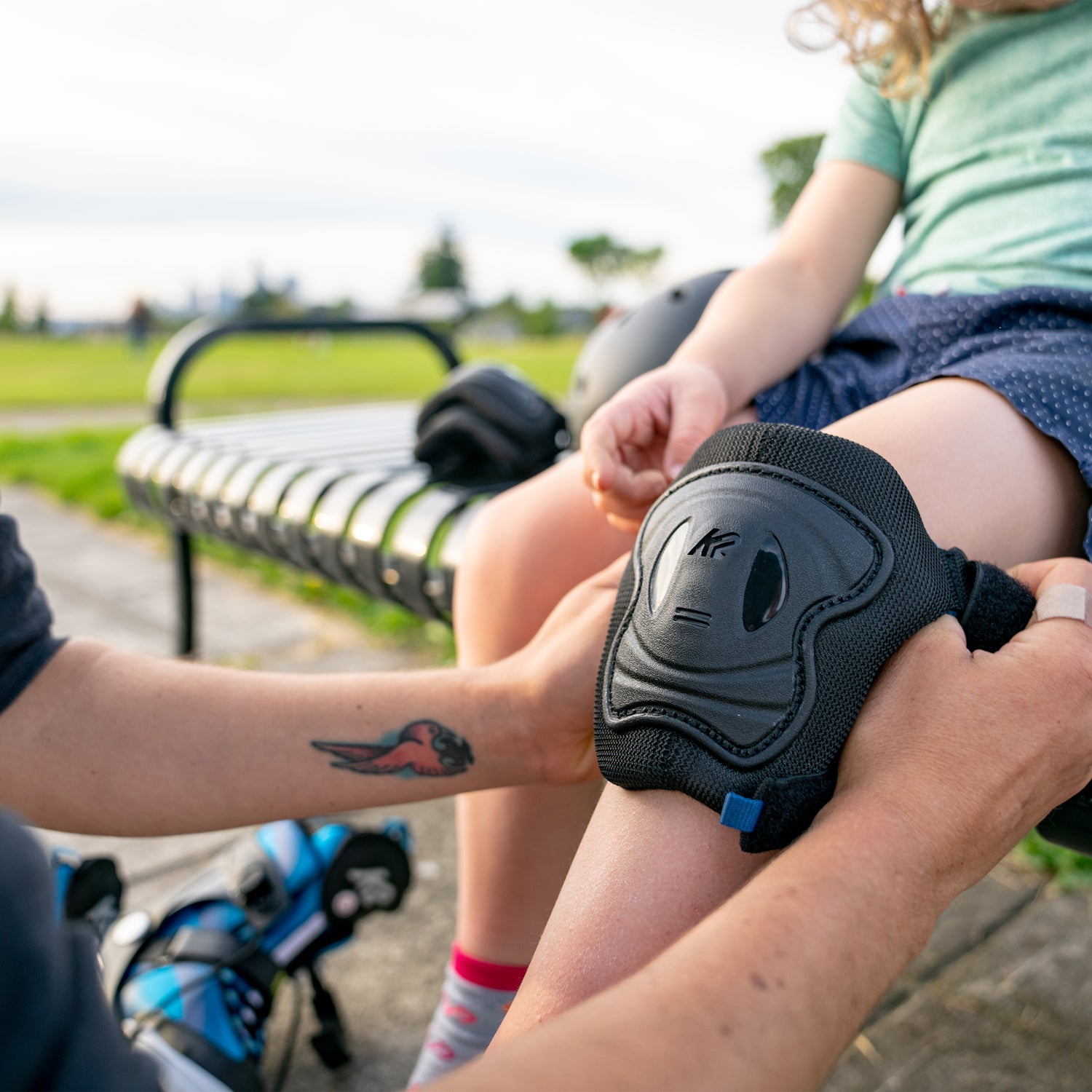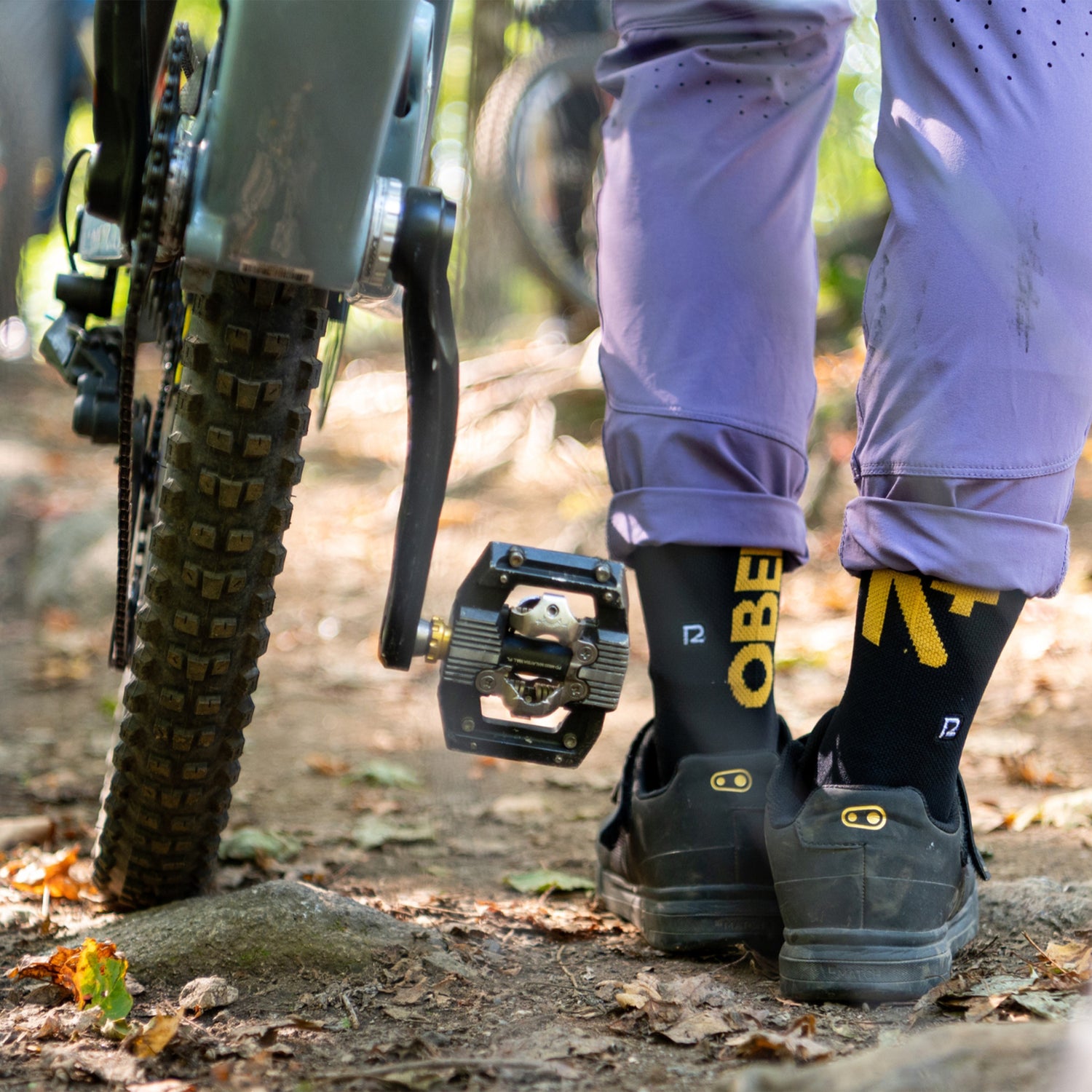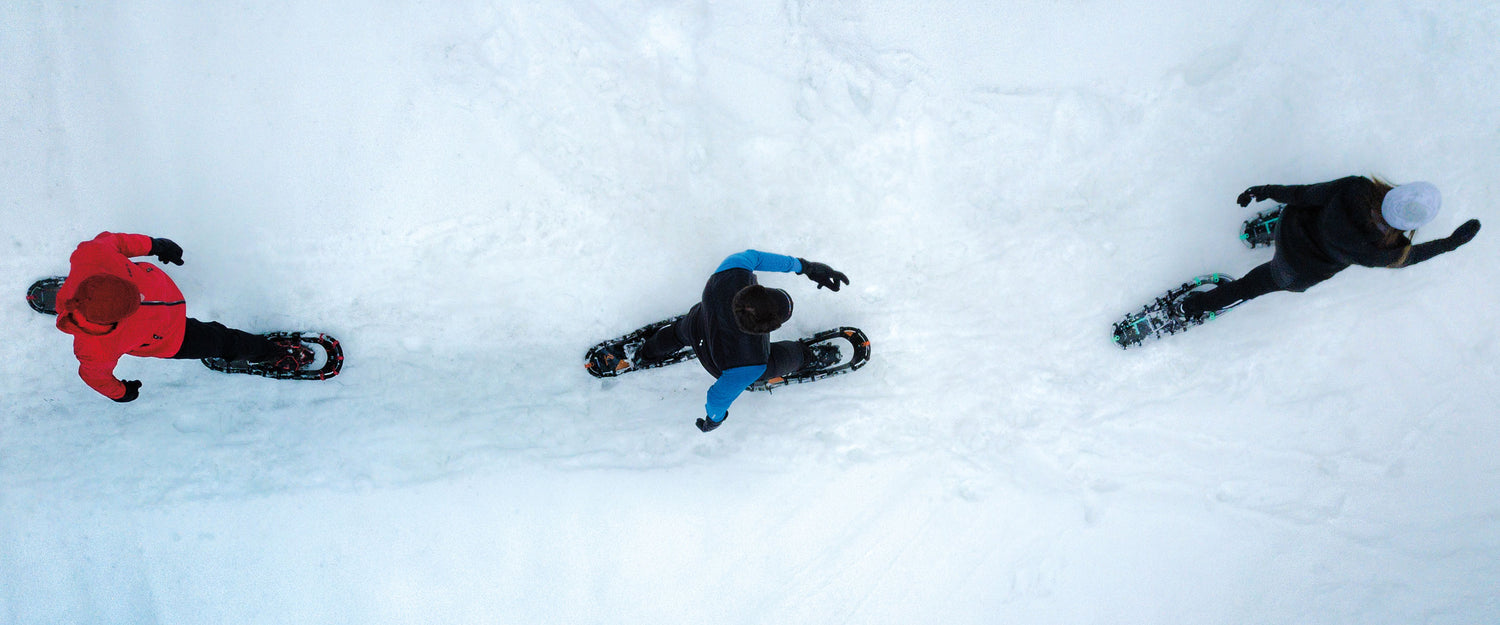1. Anatomy of a Snowshoe
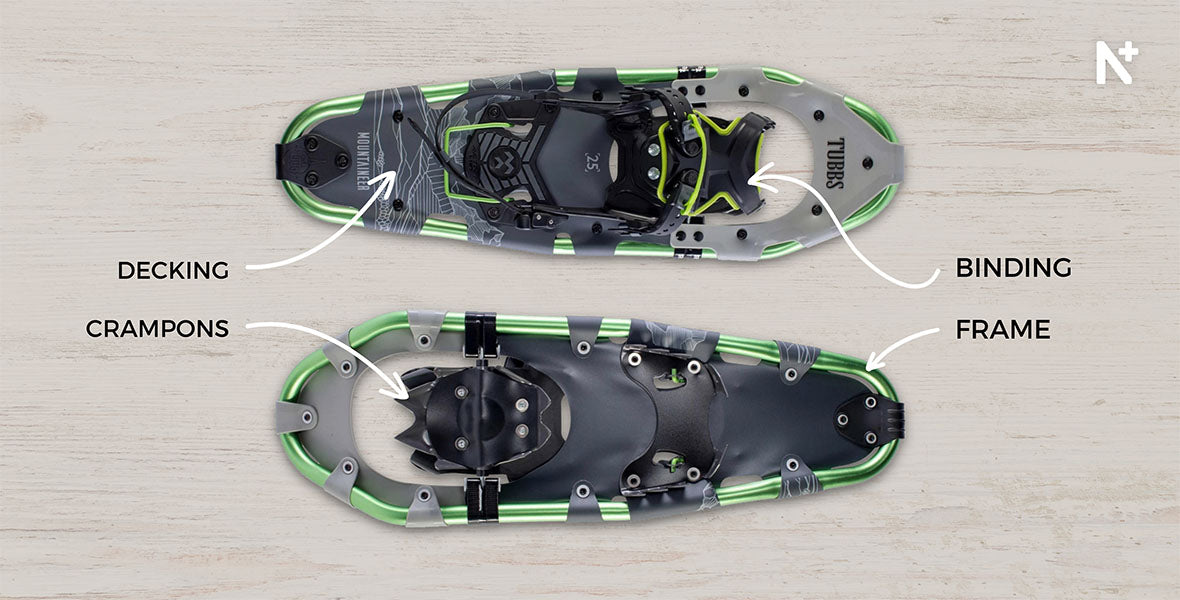
2. Construction of Snowshoes: Plastic or Aluminum?
Plastic Snowshoes
Plastic snowshoes are made of a moulded composite decking that also acts as the frame. This type of snowshoe is very durable.
Aluminum Snowshoes
This type of snowshoe is built with an aluminum frame and decking made of various materials, such as plastic, coated nylon, coated polyester, among others. They’re very light and durable.

3. Choose the Type of Snowshoe Based on the Terrain Explored
Since there are many ways to engage in this winter sport, you need to consider the type of terrain where you will most often be snowshoeing. The construction of the equipment varies depending on snowshoe style. However, all models have the same goal: to allow you to move over the snow easily to discover and contemplate new landscapes.
Snowshoes for Flat Terrain
Snowshoes that are designed to travel over flat terrain are ideal for beginners. They are built to be easy to use for recreational outings that don’t require large crampons or a heel lift (aka a riser).
Snowshoes for Rolling Terrain
Since hilly terrain can have some ups and downs, this type of snowshoe has relatively aggressive crampons to give you more traction than snowshoes for flat terrain. These snowshoes sometimes have heel lifts, which reduce fatigue on steep climbs.
Snowshoes for Mountainous Terrain
This type of snowshoe is designed to tackle big climbs on icy, steep terrain. Snowshoes for mountainous terrain have heel lifts and aggressive crampons for optimal traction.
Running Snowshoes
Running snowshoes are built to be fast and nimble on packed trails. They have a minimalist, narrow design so you can run fast. Their bindings are made for running shoes, not winter boots.
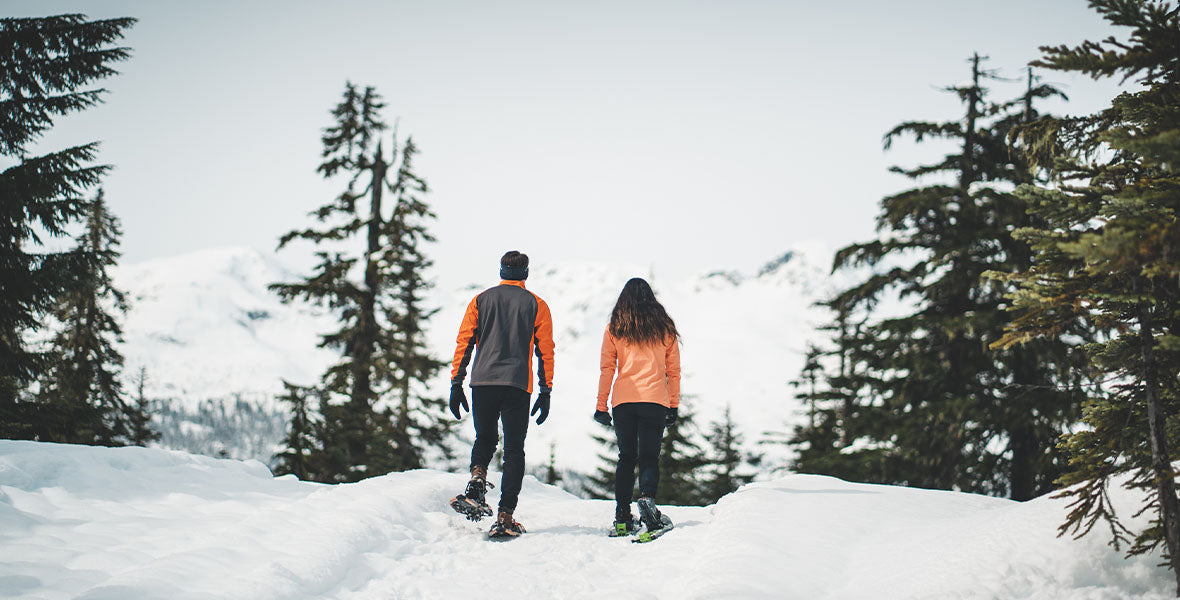
4. Choose Your Snowshoe Size
Choosing Snowshoes for Adults
The size of snowshoes for adults you choose depends primarily on the snow conditions you will be travelling in. The more powdery and deeper the snow, the bigger (mainly longer) the snowshoes you need to keep you on the surface. If you’re more of the type to walk on groomed trails, you can choose narrower, shorter snowshoes. You can also consult snowshoe manufacturers’ size charts based on your weight and height.
If you want to have snowshoes for multiple-day, autonomous hikes, add the average weight of the backpack to your weight to make sure you have good float over the snow.
Kids’ Snowshoe Sizes
To choose the size of kids’ snowshoes, the main criterion is weight rather than shoe size. The surface should also be long and wide enough to keep your little ones afloat.

5. Types of Crampons
Crampons are designed to give you traction when the snowshoes are in contact with a hard surface. All snowshoes have crampons underfoot beneath your toes. Some models are even equipped with side crampons, which allow you to traverse engaging terrain.
They will be more or less aggressive depending on the type of snowshoe. Snowshoes designed for use on steep terrain or icy surfaces feature more aggressive crampons to give you maximum traction.
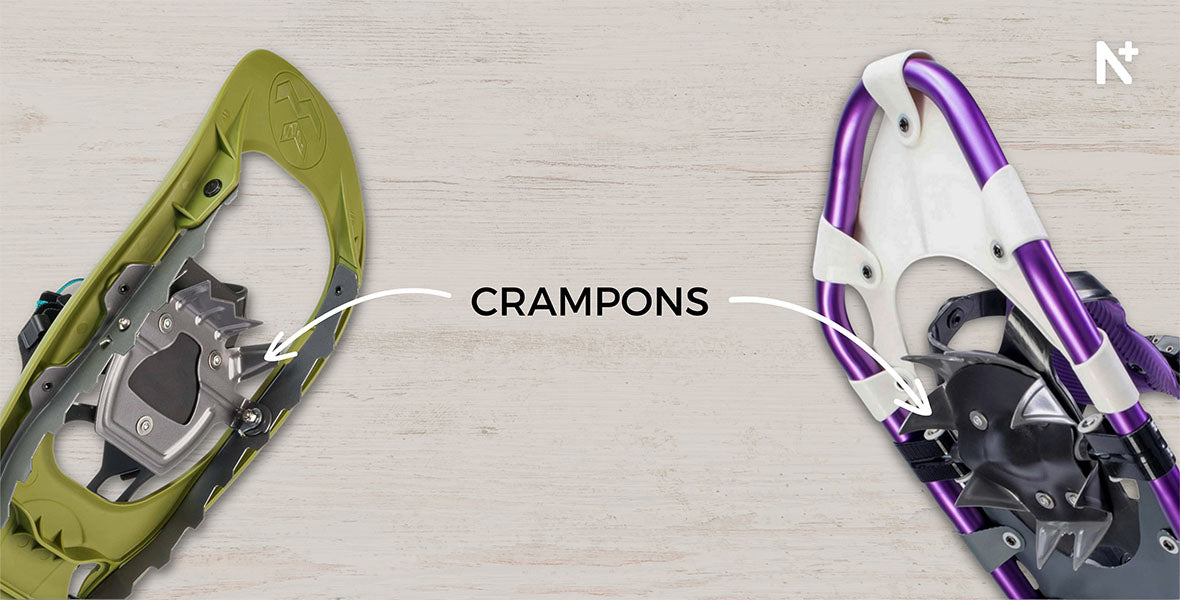
6. Types of Snowshoes Bindings
Snowshoe bindings allow you to make adjustments and hold your feet in place. They are made with two- or three-component ratchet straps or soft straps or with the BOA® system. The BOA® system is the easiest to use and gives you an efficient, precise fit that doesn’t create pressure points. Bindings with straps cost less.

7. Snowshoeing Footwear
There are no boots designed specifically for snowshoes. Most snowshoe bindings are compatible with winter boots, hiking boots and even snowboard boots. Ideally, wear boots that are insulated, comfortable and waterproof.

8. What snowshoeing accessories do I need?
Some people who snowshoe use poles, which can make it easier to travel over snow and give you more stability. They are also useful for both uphills and downhills if you plan on hiking steep trails.
In addition, snowshoe bags (for transporting your gear) can make your life easier when you head out on an adventure.
